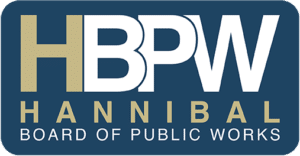RAN ON: March 23, 2016
TO: Hannibal Courier-Post
FROM: Robert W. Stevenson, P.E.
Re: What Would a Clean Line Contract Look Like?
Previous columns described the Clean Line Project as it is being proposed and Hannibal’s need for power in the future. There are many ways the two issues line up for the benefit of both parties.
Clean Line Energy needs municipal electric customers to gain Public Service Commission approval for their project. Hannibal needs energy every year for the foreseeable future. Clean Line Energy has offered four options. All of them are contingent on their ability to build their proposed transmission line.
Option1: Take transmission service from Clean Line at a firm guaranteed rate of $5/MWH for 25 years. To be useful this option must be supplemented with another contract between Hannibal and a wind generator company in western Kansas for the appropriate amount of energy. We could be in the market for about 110,000MWH annually. Indicative pricing for that energy delivered in the year 2021 is between $19-$20/MWH. Energy plus transmission is $25/MWH compared to $36/MWH from our most recent contract with a traditional supplier. If Clean Line Energy fails to complete the project we are out the legal costs of developing contracts and we are back in the market for energy. HBPW would be expected to participate in the PSC proceeding as a customer in support of the project.
Option 2: Same as Option 1 except we join with other municipal electric systems under a common contract and jointly buy more energy at a lower price. Possible savings over Option 1 might be between 5-10% but contracting and administration may be more difficult.
Option 3: Wait until the line is built before contracting for service. This removes our need to testify to the PSC but the transmission rates will be higher subject to supply and demand forces. I expect rates to go higher as eastern utilities find ways to use more of the wind energy. I also expect long term transmission rates will not be available but offered in shorter term contracts like coal based energy is today. This option assumes other utilities commit to the transmission service in Missouri, triggering the construction of the line.
Option 4: Hannibal invests in the line and becomes a passive partner paying some negotiated amount during construction for a 25MW portion. This investment reduces the transmission rate to $0/MWH for the life of the project saving the $550,000 annual cost from Option 1or 2. Risk of cost overruns during construction is eliminated by contract. Our investment would be capped at the original negotiated amount.
A more detailed discussion of Option 4 may be in order. Almost all the comments we have received from ratepayers have related to Option 4 and they have been laced with warnings about repeating past mistakes or taking risks of any kind – justifiable comments. Our lawyers and consultants reviewing this option caution that it may never actually become available to us for a variety of legal and political reasons beyond our control. We will have to maintain our ‘wait and see’ attitude toward this option.
For those readers who are not ratepayers of HBPW, please understand it is my duty to inform our customers on issues that affect their pocketbook. I am not an advocate for Clean Line Energy. I am an advocate for HBPW ratepayers who have told me they want lower rates. We rarely can deliver that, but I believe this project, regardless of who builds it, will help lower and stabilize their rates.
For more information regarding the Clean Line Energy Project or to read past articles on this subject, please click HERE.

